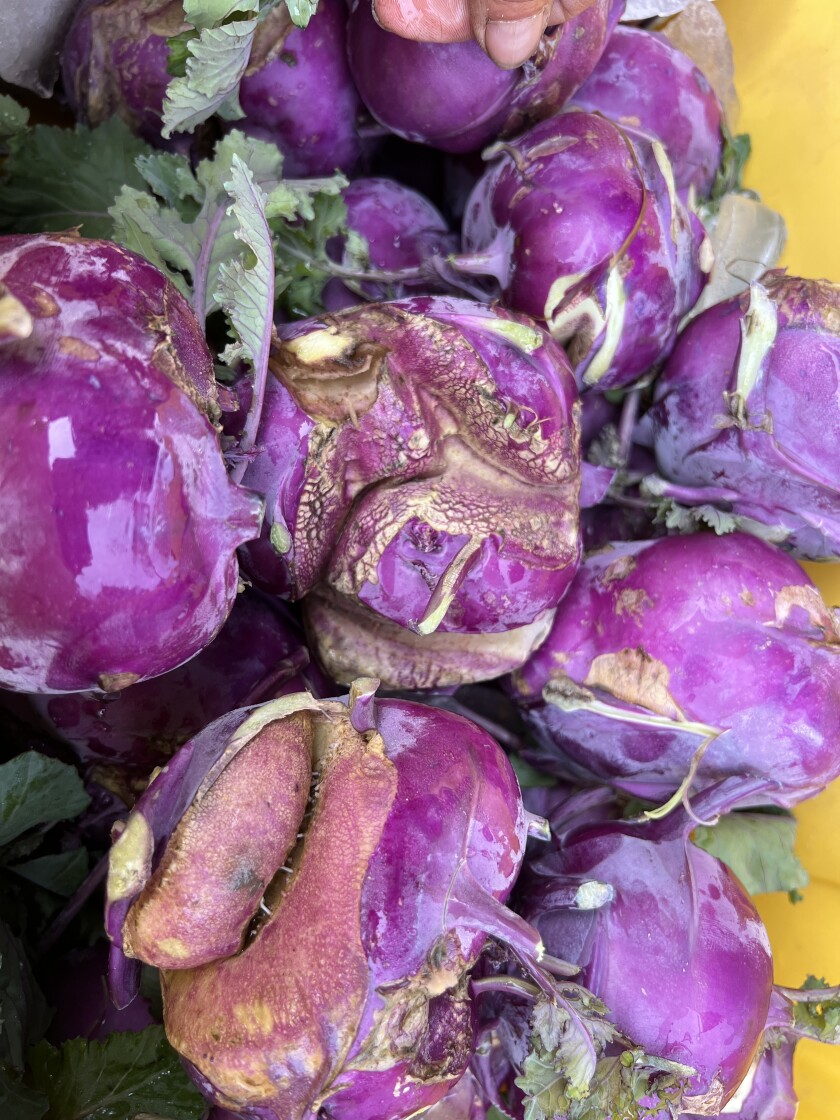RED WING, Minn. — To mark the beginning of July, vegetable growers and educators gathered for a timely webinar led by Natalie Hoidal, a vegetable specialist with the University of Minnesota Extension.
The session focused on two key themes: recovering from recent crop damage caused by extreme weather, and using succession planting to maintain fall production and meet demand from institutions like schools, hospitals and restaurants.
ADVERTISEMENT
The new normal
Hoidal emphasized that recent extreme weather events, including hail and excessive rainfall, are not anomalies, but part of a long-term trend.
“This isn’t just a weird spring. This is the new norm. And if we’re going to keep growing food successfully, we need to adapt,” Hoidal said.
Over the past 130 years, Minnesota has become progressively wetter, especially in spring. This year, central areas of the state received up to 16 inches of rain above average in just 60 days, she said.
"At 35 different weather stations across the state of Minnesota, we broke records for the most rainfall seen in the single event," Hoidal said.
Farmers markets feel the strain
Sara George, market manager for the Red Wing Farmers Market, noticed something unusual a few weeks ago when customers were warning each other to arrive early or risk missing out on vegetables entirely.
“Farmers are still bringing stuff, but it's minimal,” George said.
She checked in with other market managers across the state — they were seeing the same thing. The reasons? A tough combination of slow spring warming, too much rain, strong winds, hail, and now extreme heat disrupting pollination.
ADVERTISEMENT
“It’s dropping all the flowers off our zucchini and our cucumbers, and they’re not turning into fruits,” George said.
George sees her role as twofold: helping connect farmers to resources and educating the public.
“I think we need to raise awareness that our vegetable vendors are doing the best they can,” she said. “There will be more vegetables coming.”
Though many farmers understand that this year’s weather challenges are unavoidable, customers may not.
“It’s really a struggle,” George said. “We don’t want to lose support for the farmers markets.”
Imperfect produce, perfectly edible
George encourages shoppers to embrace produce that may look different due to hail damage but is still fresh and flavorful.
“How do we tell a community that this is OK? Because it is,” she said. “That’s hail. It’s not disease, it’s not gross, it’s just deformed.”
ADVERTISEMENT

She also advises farmers not to give up too soon.
“I had three farmers tell me this year that they lost 100% of their crop after the hail hit,” she said. “Within a week and a half, they were like, ‘Oh, I might get about 50%.’”
A heavy toll
George likens the hardship plants face to what humans endure during bad weather.
“The plants can’t run for cover. We have to give them time to regroup," she said.
This season started with low temperatures and Canadian wildfire smoke that blocked sunlight, followed by flooding rains, wind, hail — and now scorching heat.
“I’ve heard from so many farmers say this is the hardest year they’ve ever experienced,” she said.
Flooded fields also prevented weeding, further stunting crop growth.
ADVERTISEMENT
George urges shoppers to stay committed to supporting the local food community.
“If the community knows that A, farming is hard, and B, this year has made it even harder — don’t give up if you go to the market and don’t see much," she said. "Just go early if you really want vegetables, and thank the farmer — because they’re really struggling.”












